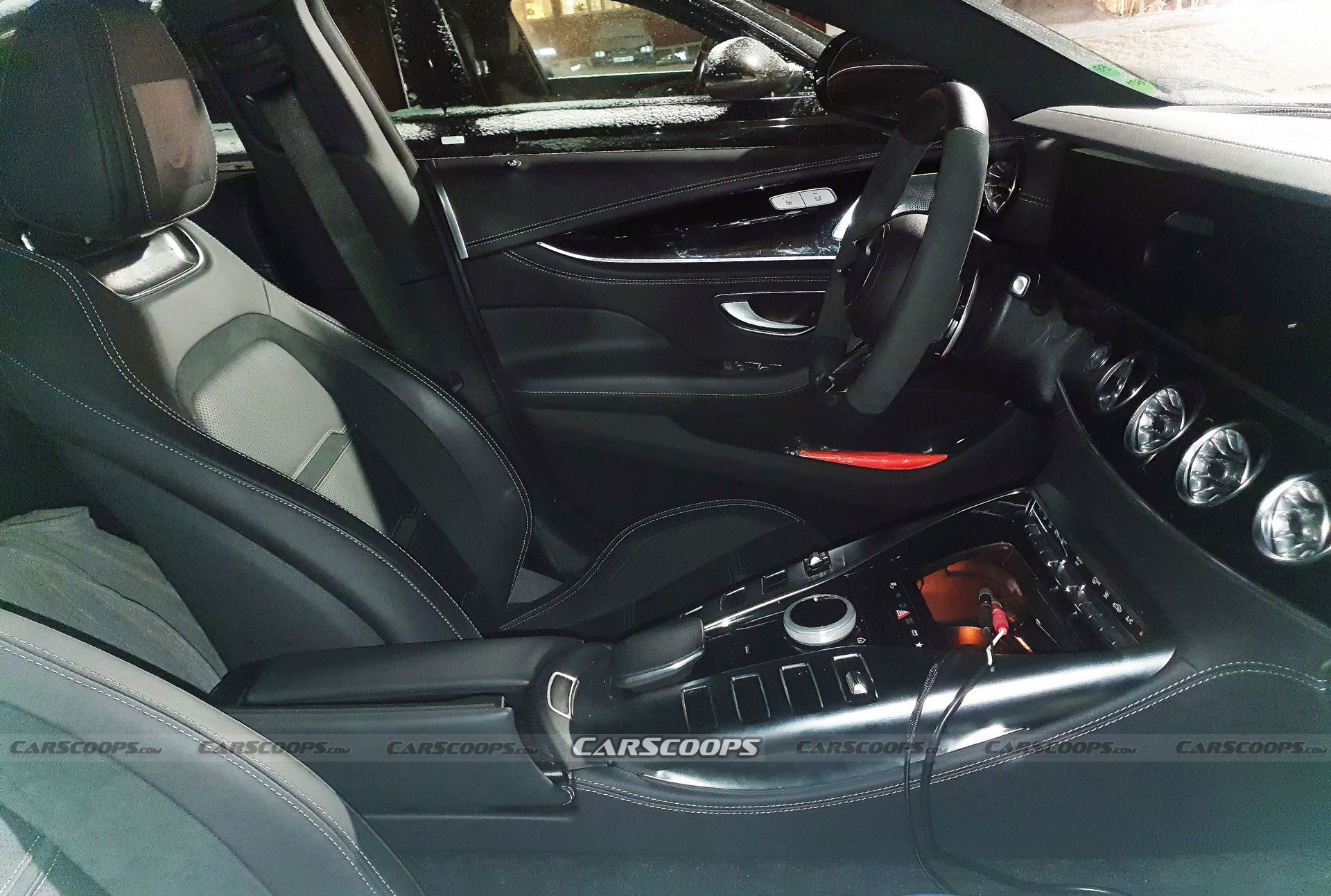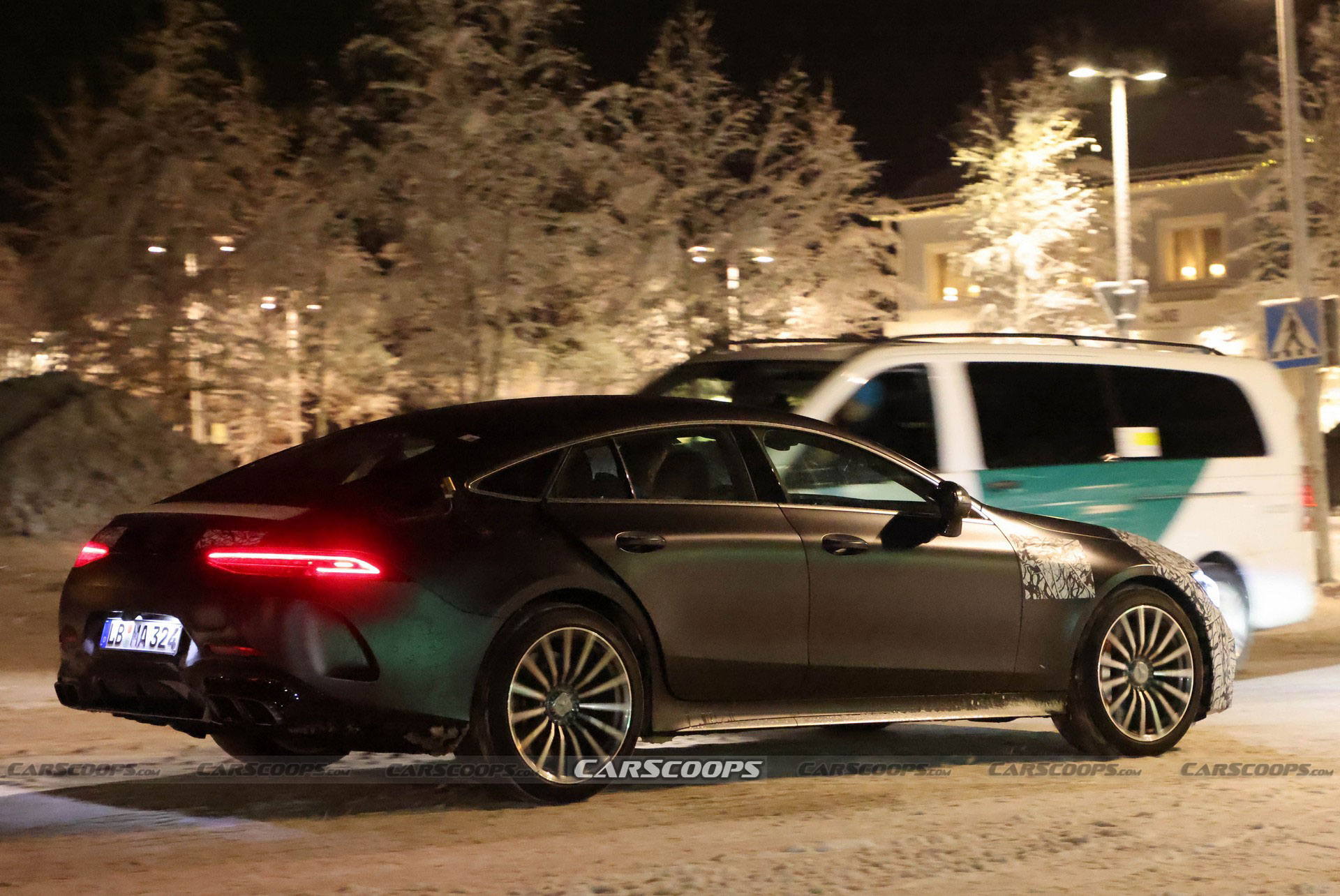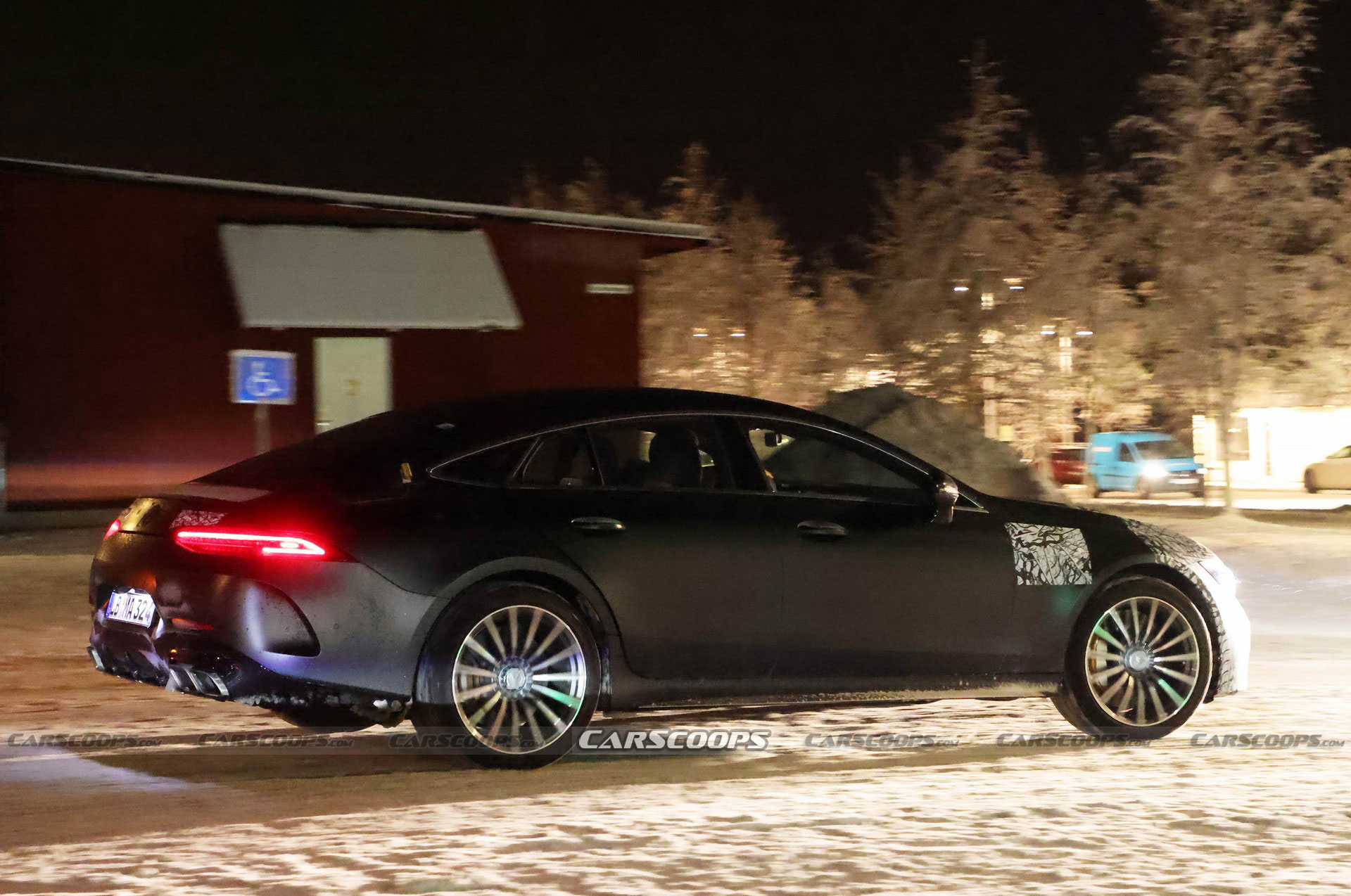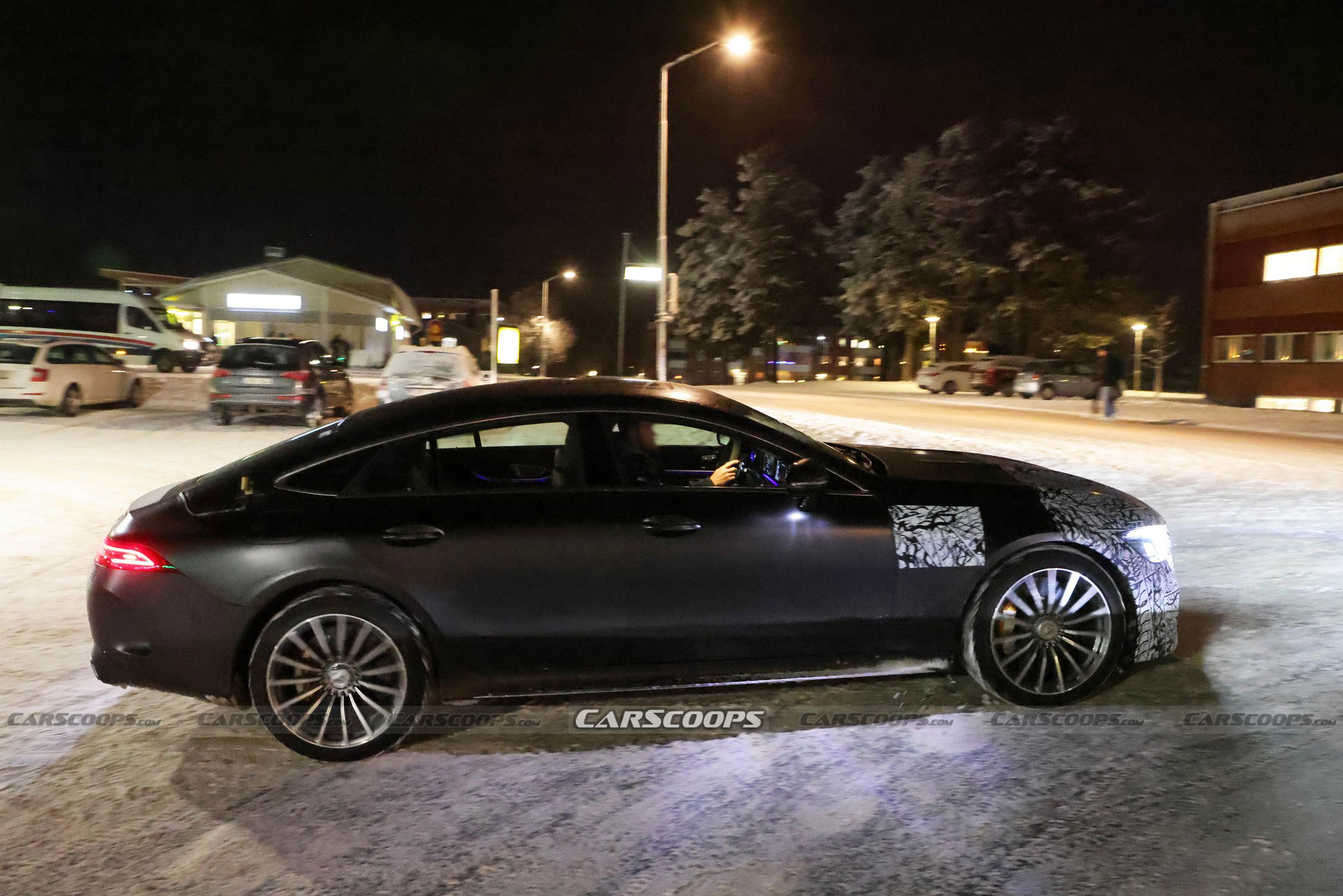Work continues on the facelifted Mercedes-AMG GT 4-Door as spy photographers have snapped a prototype in Northern Sweden.
While there isn’t much to see, the front end is heavily camouflaged and this suggests the car has been equipped with a new front bumper. That remains to be seen, but the vertical supports in the lower intake appear more prominent than those found on the current model. The front splitter also looks more pronounced, although it’s hard to be certain at this point.
Additional changes are limited, but the front fender vents are camouflaged and this suggests they will be updated as well. Everything else appears to carryover, but it’s believed the production model will have more extensive changes including a new rear bumper and modified lighting units.
Also: Mercedes-AMG GT 4-Door Prototype Suggests A Facelift Might Be In The Works
The cabin looks instantly recognizable at first glance, but Mercedes will be making a handful of minor updates. In particular, the prototype appears to have a new shifter than is shorter and less ostentatious than the one found on the current model.
Furthermore, the touchpad controller has been replaced by a new rotary dial that features a dedicated home screen button nearby. The display for the digital instrument cluster and infotainment system also seem slightly different, so it’s possible that has been updated as well.
Little else is known about the car at this point, but the current model offers an assortment of powertrains including a turbocharged 3.0-liter six-cylinder engine with 362 hp (270 kW / 367 PS) and 369 lb-ft (500 Nm) of torque. Customers can also opt for a 53 variant, which has an upgraded six-cylinder developing 429 hp (320 kW / 435 PS) and 383 lb-ft (520 Nm) of torque.
Sitting at the top of the lineup are three 63 variants, including a plug-in hybrid model with a twin-turbo 4.0-liter V8, a rear-mounted electric motor, and a 6.1 kWh battery pack. This setup gives the GT 63 S E Performance a combined output of 831 hp (620 kW / 843 PS), which enables it to rocket from 0-62 mph (0-100 km/h) in 2.9 seconds.



















